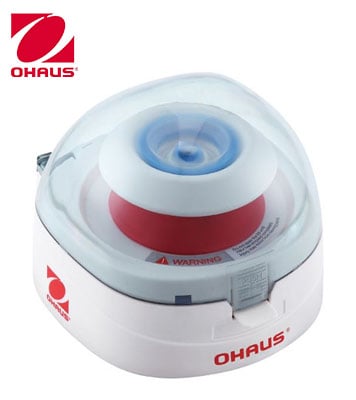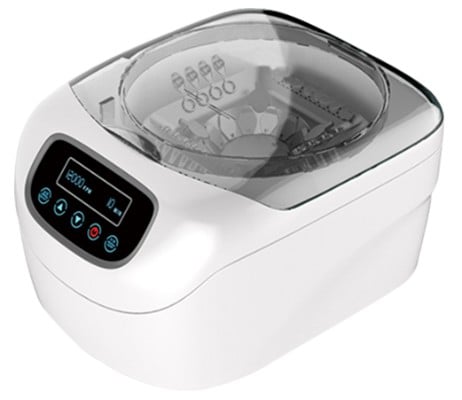How Does Centrifugation Work? The Science Behind the Centrifuge
May 20, 2022

This guide aims to give you an understanding of what centrifugation is and its intended purposes.
Behind the centrifugation process is a hard-working device called a centrifuge. A centrifuge is a valuable tool often used in various laboratories and industries.
Knowing what this tool is and its forces at work are essential to get the best use out of it. Read ahead to know the basics of the centrifuge and the centrifugation technique.
What Are Centrifuges?
The physics behind centrifuges may not be common knowledge, but it can often pique curiosity. A centrifuge is a machine through which centrifugal force is applied to substances.
For instance, blood cells and plasma – based on density. When placed into a centrifuge and acted upon by force, sample contents will separate.
This makes it easier to work with each one on its own. In research and clinical labs, it is also used for cell, virus, and nucleic acid purification.
Principles of Centrifugation
Centrifugation is the act of applying a centrifugal force onto a substance. At its core, it is separation through sedimentation.
The denser particles sink to the bottom of the container; the more lightweight particles remain suspended. Generally, centrifuges separate particles suspended in a liquid according to the following:
- The density of the samples and solution
- The temperature and viscosity
- The distance that the particles are displaced
- The speed of rotation
Centrifugation can occur with either filtration or sedimentation methods. Filtration uses a mesh screen to hold back the solid components.
This allows the liquid components to flow through. Filtering does not work to centrifuge blood samples as the components are too small.
Either way, the particles are suspended in liquid and separated in the centrifuge. Again, the separation happens due to centrifugal force.
How does centrifugation work?
An easy way to explain the principle of a centrifuge or how centrifugation works is this:
Hold something heavy in your hand and whirl your arm around your head. Do you feel the force pulling your shoulder out of its socket? That is the principle of the centrifuge at work.
Now back to laboratory work. Within a solution, gravitational force will cause higher density particles than the solvent to sink.
Then, those less dense than the solvent will float. Centrifugation takes advantage of minute differences in density to separate particles within a solution. Often found in laboratory settings, especially where isolating biological components for testing is necessary.
But believe it or not, centrifuges are found not only in labs but also in many homes. An excellent example of home appliance centrifuges is washing machines.
The water and your clothes are the two substances that the washing machine tries to separate. During the spin cycle, it produces a force that moves outward from its centre.
This centrifugal force pulls your clothes toward the edges of the washing machine. Once pressed against the sides of the machine, the force then draws the water out of the garments.
Defining ‘centrifugal force’
When the centrifuge spins, it creates a strong centrifugal force. Centripetal force can be defined as the force that acts on an object to direct it towards a centre of curvature.
It is the very essence of what makes a centrifuge work.
How to Use a Centrifuge Machine
Despite the complex principles of centrifuge, operating the machine itself is quite simple. To use a centrifuge machine:
- Insert the test tube sample into one of the portals.
- If needed, based on the number of samples you are testing, insert tubes filled with water for balance.
- Secure the lid and select desired settings.
- Start the centrifuge and wait for it to complete the cycle.
- When the machine has stopped spinning, take out the balances and samples.
- Each sample will now be separated into its various components and ready for analysis.
Remember, knowing how a centrifuge works is key to using it properly.
How do you balance a centrifuge?
Prior to starting the machine, it is important to load it correctly. Balancing the centrifuge prevents potential damage to the instrument.
Plus, it is crucial for safe operation. To balance a centrifuge:
- Fill all the sample tubes evenly. For extra tubes required for the balancing, fill them with water or a liquid of similar density to the sample.
- The mass should be balanced and is to the nearest 0.1 grams.
- For each tube inserted in the rotor, add a tube of equal weight directly opposite it. This will ensure the centre of gravity remains in the centre of the rotor.
- Rotate the rotor 90° and add two additional tubes directly opposite one another.
- Repeat.
Centrifuges Types and Uses
In laboratories, centrifuges are used to separate two materials with similar densities. Or when insoluble particulates exist in a dissolved solution.
The different types of centrifuges commonly used in labs include:
1. Microcentrifuge
As the name suggests, microcentrifuges are compact in design. They have a smaller footprint that takes up little space on the workbench.
Ideal use for small tubes (up to 2.0 ml) and often used in biological applications. These include pelleting nucleic acids and proteins from solutions, and microfiltration of minor aqueous samples.
Some microcentrifuges come with different rotors or rotor adaptors. Have a look at this mini centrifuge unit from OHAUS.

OHAUS Mini Centrifuge Frontier (FC5306)
Product code: LQ2126
The Frontier is a small but powerful centrifuge ideal for quick liquid separation. With an eight place, 1.5/2mL tube rotor and a four-place PCR 8-strip tube rotor, it can accommodate 0.2mL 8 strip tubes or 32 individual PCR tubes.
With the included adapter, 0.2mL and 0.5mL tubes can also be accommodated in the eighth place tube rotor. This mini centrifuge provides quiet, safe, and easy operation for your everyday quick spin-down applications.
2. Refrigerated centrifuges
This type of centrifuge is ideal for storing samples at a consistent temperature. And to do that, a refrigerated centrifuge functions at maximum speeds while maintaining a steady temperature.
The temperature range is between -20°C and -40°C. This makes it perfect for analysing DNA, RNA, PCR, and antibodies.
Note: Small and large capacity refrigerated centrifuges have different uses.
3. Universal centrifuges
A type of centrifuge with various rotor choices that can spin at different speeds. At the same time, they process laboratory samples differently.
Their excellent performance and comprehensive range of accessories enable them to carry out virtually any centrifuging task. If you are looking for one, check out our offer down below.

Universal Centrifuge 500-6000 RPM
Product code: LQ2125
This Universal Centrifuge has a remarkable design with a unique appearance. Equipped with electronic locks wherein centrifugation occurs only when you lock the lid.
The lid opens automatically after centrifugation. It has a fast lifting speed and a low noise level. Real-time display of speed, time, and operating status, with adjustable speed during centrifugation.
Suitable for 0.2mL / 0.5mL / 1.5mL / 5mL centrifuge tubes without changing the rotor. For laboratory or educational setting use only.
The Bottom Line
The purpose of a centrifuge is to take advantage of the principles above. Use them to separate liquids from solids or lighter liquids from denser liquids.
It essentially does what gravity would naturally do, but much faster. If you did not feel like waiting for gravity to work its magic, use a centrifuge. It enacts a force much stronger than gravity, speeding up the process.
© Electrotech Brands Pty Ltd 2022


Write a Comment
You must be logged in to post a comment.